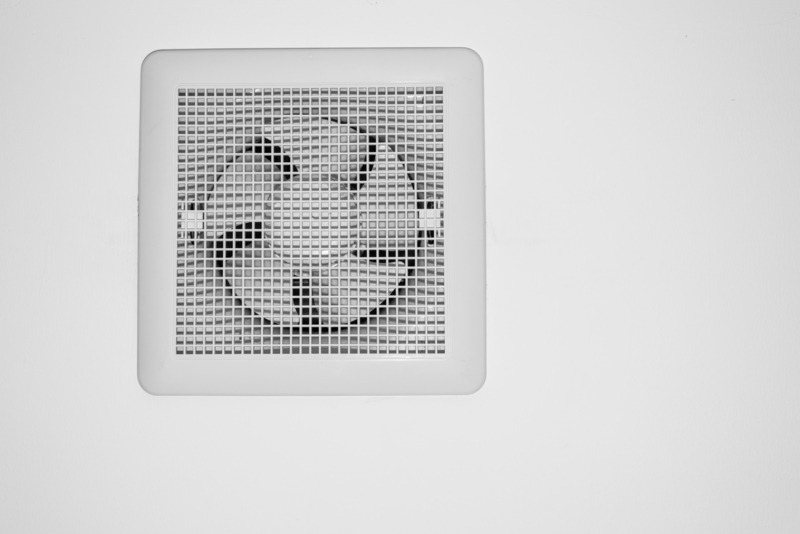Transform Your Stovetop: Clean Burnt-on Residue with Ease
Posted on 26/05/2025
Transform Your Stovetop: Clean Burnt-on Residue with Ease
Keeping a kitchen spotless isn't only about aesthetics--it's also a measure of hygiene and efficiency. Among all kitchen chores, cleaning burnt-on residue from your stovetop can be one of the hardest tasks. Grease splatters, sauce overflows, and lingering stains make even the most pristine stoves look aged. But worry no more! This comprehensive guide will show you how to clean burnt stains, remove stubborn stovetop grime, and restore your appliance to its original glory--quickly and with minimal effort.

Why Is Burnt-On Residue So Tough to Remove?
Burnt-on residue is more than just an eyesore. When food drips and is exposed to direct heat, it undergoes caramelization and even carbonization. Once these processes happen, the residue isn't simply sitting on your stove; it's fused to the surface. Trying to remove it incorrectly can cause scratches or damage--especially on glass or ceramic cooktops.
- Grease and sugar-based spills harden and become almost glue-like.
- Repeated heating and cooling cycles "bake" stains into the surface.
- Using harsh tools or chemicals can ruin delicate stove finishes.
But don't despair. With the right methods, you can achieve a sparkling, professional finish!
Tools and Products You'll Need
Before tackling your burnt stovetop residues, gather the following supplies. The right arsenal ensures effortless cleaning and protects your stovetop's surface.
- Baking soda - Mild, natural abrasive perfect for scrubbing away tough stains
- White vinegar -- Breaks down mineral deposits and softens burnt residue
- Dish soap -- Degreases and cleans
- Microfiber cloths -- Non-abrasive, perfect for buffing and wiping
- Razor blade scraper (for glass/ceramic stoves) -- Carefully removes solidified residue
- Sponge or non-scratch scrub pad
- Gloves (optional) for protecting hands
Avoid steel wool or harsh chemicals that may gouge, pit, or corrode your appliance.
Step-by-Step Guide: How to Clean Burnt-On Residue from Any Stovetop
1. Preparation: Safety First!
- Turn off and unplug your stove (if possible) to prevent accidents and burns.
- Wait until the stovetop is completely cool.
- Remove all grates, burner caps, and removable knobs and set them aside.
2. Pre-Clean and Degrease
- Wipe down the stovetop with a damp microfiber cloth to remove loose debris and surface grease.
- Use a solution of warm water and dish soap to further cut through oily residue.
- For extra stubborn spots, spray white vinegar and let it sit for 5-10 minutes.
3. Tackle the Burnt-On Stains
Here's where we clean the burnt-on residue that resists your usual wipes:
- Baking Soda Paste: Mix 3 parts baking soda with 1 part water. Spread it over burnt areas.
- Let it sit for 20 minutes so the baking soda can penetrate and loosen the residue.
- Use a damp non-scratch sponge to gently scrub in a circular motion. Avoid excessive force!
4. For Glass or Ceramic Stoves: Razor Blade Scraping Technique
- Hold a designated scraper or razor blade at a 45-degree angle. Gently push the edge under the residue, taking care not to scratch the glass.
- After each scrape, wipe with a clean, damp cloth.
- Repeat until residue is gone--but do not use a razor blade on coil or gas stovetops.
5. Treating Melted Sugar or Sticky Spills
- Sugar-based spills? Soak a towel in warm water, lay it over the spot, and cover with plastic wrap for 30 minutes. This traps steam and softens the mess.
- Wipe away residue, then reapply baking soda paste if needed.
6. Rinse and Final Polish
- Wipe down the entire surface with a clean, damp microfiber cloth to remove any cleaning solution, loosened grime, or powdery residue.
- Buff dry with a fresh microfiber towel. This ensures a streak-free, sparkling finish.
Stovetop Cleaning Hacks: Quick Fixes for Every Type
Gas Stovetops
- Burner grates: Soak in hot, soapy water for 20 minutes. Use a paste of baking soda and vinegar for any stubborn spots.
- For aluminum burner caps: Avoid steel wool! Use only soft sponges or toothbrushes.
Electric Coil Stoves
- Remove coils (if possible) before cleaning. Wipe the surface with a soapy sponge.
- For burnt-on debris on coils: Use a damp cloth; never submerge in water.
Glass or Ceramic Stovetops
- Never use abrasive scrubbers; always opt for baking soda and specialty stovetop scrapers.
- Finish with a glass cleaner for a flawless shine.
Natural Alternatives and DIY Cleaners
Want a more eco-friendly way to clean your stovetop? You can use natural household items that are safe for the environment and for your family.
- Lemon juice: Acts as a natural degreaser and leaves behind a fresh scent.
- White vinegar and baking soda: A fizzing combination that lifts off burnt residue with ease.
- Hydrogen peroxide: For extra whitening power on light-colored stovetops, mix with baking soda.
Simply sprinkle baking soda, squirt vinegar (or hydrogen peroxide), let it foam, and wipe away loosened grime!
Preventing Burnt-On Messes: Pro Tips
- Wipe spills immediately. The sooner you clean up an accident, the less it will stick.
- Use burner liners: These catch drips and can be swapped out for easy cleaning.
- Deep clean weekly: Even if you don't see major messes, a quick wipedown prevents buildup.
- During cooking, use wider pots or pans to avoid boil-overs.
- Keep a microfiber cloth handy to quickly manage new splatters.
Common Mistakes to Avoid
- Don't use steel wool or harsh scouring pads. These create scratches and make surfaces prone to future staining.
- Avoid harsh chemicals. Especially on induction, glass, or ceramic stovetops. They can cause permanent discoloration.
- Never use a knife or screwdriver as a scraper. Specialized blades are made for cleaning stovetops safely.
- Don't clean while the surface is hot--burn risks, plus cleaning products can evaporate rather than work effectively.
Best Commercial Products for Cleaning Burnt Stains
If you want extra muscle for your messiest jobs, consider these top-rated commercial stovetop cleaners:
- Cerama Bryte: Specially formulated for glass and ceramic stoves. Includes a gentle scraper tool.
- Weiman Cooktop Cleaner: Great for tough grease and burnt-on food. Leaves behind a protective shine.
- Bar Keepers Friend: Excellent on stainless steel and other surfaces; removes staining without scratching.
Always check your stovetop manufacturer's recommendations before using commercial cleaners to avoid voiding the warranty.
FAQ: Burnt-On Residue Stovetop Cleaning
Is it safe to use vinegar on all stovetops?
Yes, but always dilute with water and avoid prolonged soaking, especially on aluminum or delicate finishes.
What if burnt residue remains after cleaning?
Repeat the process, allowing longer soak times. For stubborn stains, alternate between baking soda scrubs and gentle scraping.
Can I use oven cleaner on my stovetop?
No. Oven cleaners are highly caustic and can damage the finish or ignite toxic fumes when the stove is used.
How often should I deep-clean my stovetop?
Aim for a thorough cleaning at least once a week, or more after heavy cooking sessions.

Conclusion: Enjoy a Spotless, Like-New Stovetop Every Day
Cleaning burnt-on residue from your stovetop doesn't have to be a dreaded chore. With the proper techniques and a little patience, you can transform your stovetop and keep it shining for years to come.
Remember: Act quickly on spills, use gentle-yet-effective cleaning agents, and develop a regular cleaning routine. Whether you have a gas, electric, or glass cooktop, these burnt-on stain removal tips will help you restore your kitchen's heart to its best condition.
With these easy, practical methods, you'll never fear a burnt-on mess again. Say goodbye to stubborn grime and hello to a sparkling, efficient, and inviting kitchen workspace!
Additional Resources
- Check your stovetop manufacturer's care manual for personalized advice
- Watch online tutorials for visual cleaning techniques
- Join kitchen cleaning forums to share your tips and experience with others
Transform your stovetop--clean burnt-on residue with ease, and keep your kitchen looking (and cooking) its absolute best!





